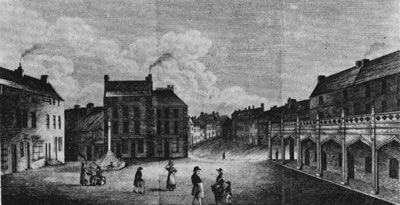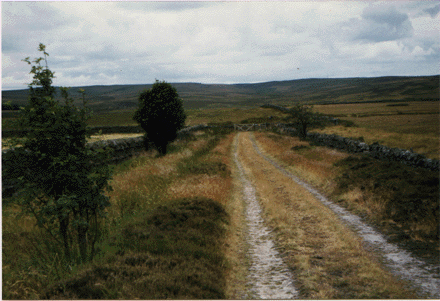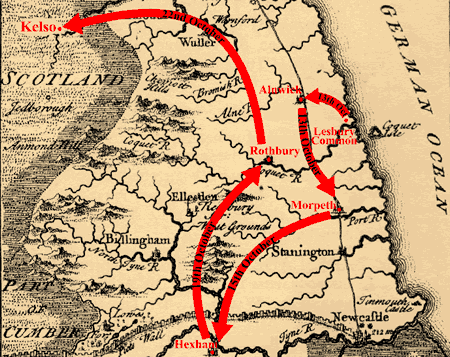The Campaign in Northumberland
 Meanwhile, the Northumbrians had been forced to move from Lesbury on the 13th due to the approach of a Government force of four regiments under General Carpenter. They first rode to Alnwick, proclaiming James III as King there, before doing the same at Morpeth.
Meanwhile, the Northumbrians had been forced to move from Lesbury on the 13th due to the approach of a Government force of four regiments under General Carpenter. They first rode to Alnwick, proclaiming James III as King there, before doing the same at Morpeth.
The next day, two French warships arrived at Holy Island and signalled to the castle. But the Erringtons had been in Berwick Gaol for three days and the main Jacobite army was gone. The ships sailed on to Scotland. With their departure, the best chance of the rising had already passed. Forster, unaware of the arrival and departure of the French ships, still hoped to carry out a successful attack on Newcastle. But with only 300 men under arms it was quite clearly impossible. Instead the Jacobites moved out to Hexham on 15th. The army billeted on what today is now known as Rebel Hill south of Hexham, waiting for an opportunity to surprise Newcastle. Then, on 17th, Forster received two important pieces of news. Firstly, Forster finally heard of the rising in the Scottish Lowlands under Kenmure, and wrote to him requesting that he march to Rothbury. Secondly, he gained intelligence that Carpenter was now planning to march on him and destroy his small army.
Forster, unaware of the arrival and departure of the French ships, still hoped to carry out a successful attack on Newcastle. But with only 300 men under arms it was quite clearly impossible. Instead the Jacobites moved out to Hexham on 15th. The army billeted on what today is now known as Rebel Hill south of Hexham, waiting for an opportunity to surprise Newcastle. Then, on 17th, Forster received two important pieces of news. Firstly, Forster finally heard of the rising in the Scottish Lowlands under Kenmure, and wrote to him requesting that he march to Rothbury. Secondly, he gained intelligence that Carpenter was now planning to march on him and destroy his small army. He therefore abandoned all hope of attacking Newcastle and marched to Rothbury, meeting up with Kenmure and his small army on the 19th. Communications had at last been established with Mackintosh, and on 22 October the Lowland Scots, the Highlanders and the Northumbrians all met up Kelso in pouring rain, the Highlanders playing their bagpipes as they marched into the town.
He therefore abandoned all hope of attacking Newcastle and marched to Rothbury, meeting up with Kenmure and his small army on the 19th. Communications had at last been established with Mackintosh, and on 22 October the Lowland Scots, the Highlanders and the Northumbrians all met up Kelso in pouring rain, the Highlanders playing their bagpipes as they marched into the town.